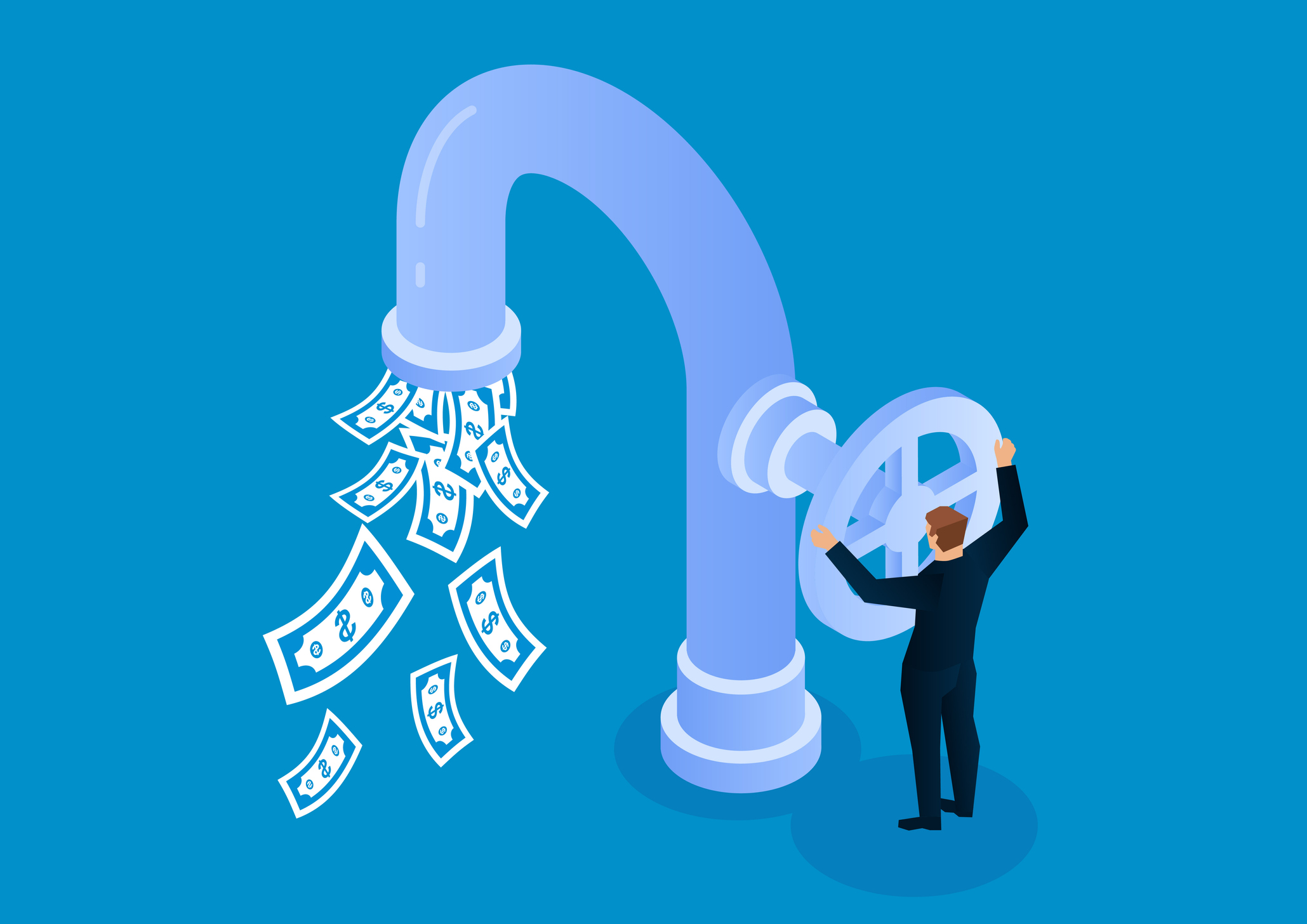James K. Glassman's 10 Stock Picks for 2015
Google trades at a price-earnings ratio of 19, an attractive valuation for a great company.

In 2013, my annual stock selections broke a personal record, returning 42%, a full 16 percentage points better than Standard & Poor’s 500-stock index. When I offered my selections for 2014, I warned readers: “Don’t expect another 42% gain.” Boy, was that an understatement. My picks were awful, gaining 1% on average over the past year. That was 14 points worse than the S&P 500. I had three miserable losers: Stemline Therapeutics (symbol STML), down 45%; Tower Group International (TWGP), off 38%; and Home Inns & Hotel Management (HMIN), down 13%.
Am I depressed? Nowhere near. I’m back with another list culled from the choices of investment advisers I trust, beginning with 2014’s best stock picker, Daniel Abramowitz, of Hillson Financial Management, in Rockville, Md. For 2014, Abramowitz chose Material Sciences (MASC), a tiny manufacturer of lightweight alternatives to stainless steel. In March, the company was bought out at a 42% profit. In 2013, Abramowitz’s pick, Cenveo (CVO), scored a 45% gain. (Unless otherwise indicated, all prices and returns are as of October 31.)
So I pay close attention to Abramowitz, who specializes in stocks of tiny companies, or micro caps. His favorite for 2015 is Conrad Industries (CNRD), a 66-year-old Louisiana firm that builds and repairs tugs, barges and offshore supply vessels. Sales have more than doubled since 2010, and earnings per share have tripled. “The balance sheet is rock solid,” says Abramowitz. Conrad’s market capitalization (price times shares outstanding) is $233 million, and the company has $64 million in cash. Conrad is “a ridiculously cheap stock,” says Abramowitz.

Sign up for Kiplinger’s Free E-Newsletters
Profit and prosper with the best of expert advice on investing, taxes, retirement, personal finance and more - straight to your e-mail.
Profit and prosper with the best of expert advice - straight to your e-mail.
Terry Tillman, an analyst with Raymond James Associates who specializes in business-software companies, has also been a reliable winner. His 2012 choice, SuccessFactors, was taken over by SAP for a 48% gain; Tangoe (TNGO), his 2013 pick, rose 43%. In 2014, he selected Salesforce.com (CRM), which was up 19%. He’s sticking with Salesforce. The company, which makes software aimed at enhancing the relationship between businesses and their customers, is unprofitable. But Tillman predicts that revenues will rise at a 30% annual clip for the next few years as the firm uses cloud-computing products to expand its lead over the competition.
In 2015, Will Danoff will celebrate a quarter-century at the helm of Fidelity Contrafund (FCNTX), one of the best mutual funds in America. Its top holding, at 7% of assets, is Google (GOOGL). It now trades at a price-earnings ratio of 19, based on projected 2015 profits. That’s an attractive valuation for a great company whose earnings have been growing more than 20% a year.
Through the third quarter of 2014, the diversified U.S. stock mutual fund with the best five-year record was Matthew 25 (MXXVX). The fund is named for a passage in the Bible, but, according to its Web site, it “does not consider itself a religious or socially conscious fund.” Whatever you call it, Matthew 25 has certainly rewarded its shareholders. The fund’s number-two holding, after Apple (AAPL), is Cabela’s (CAB), a retailer of fishing, hunting and camping gear. The stock’s P/E, based on projected 2015 earnings, is a reasonable 14, and a 33% decline in the stock price from its March peak makes Cabela’s especially attractive.
Jim Roumell, a value-loving money manager with a sterling long-term record, was behind the pick of Tower Group, but I’m bringing him back anyway. For 2015, his choice is Rosetta Stone (RST), the leader in software-based language instruction. Rosetta has acquired Lexia Learning, which teaches reading to schoolkids, and Fit Brains, which sells brain-training exercises. Its stock has fallen by two-thirds since 2010. But the firm has hired smart new managers, and on a price-to-cash-flow basis the stock is downright cheap, says Roumell.
Wasatch World Innovators (WAGTX) would be among my favorite mutual funds if it weren’t for its absurdly high, 1.77% expense ratio. You can benefit from the stock-picking skills of Samuel Stewart—one of the fund’s comanagers and the president of Wasatch since 1986—and his excellent team by simply choosing some of the best assets in the portfolio. For 2015, I like Danish drugmaker Novo Nordisk (NVO), which specializes in diabetes care and hormone replacement therapy. It’s a big firm, with a market cap of $119 billion (more than one-third the gross domestic product of the country where it’s based) and an impressive growth record that should continue.
If you’re looking for stocks with consistent payouts, the fund to buy is iShares Select Dividend ETF (DVY). The exchange-traded fund’s top holding is Lockheed Martin (LMT), the giant aerospace and defense company. The stock yields 3.1%, which is more than a 30-year Treasury bond pays. Unlike bond interest payments, dividends aren’t guaranteed. But Lockheed’s disbursements have a history of growing; in fact, the company has boosted its dividend for 12 straight years. Lockheed’s stock will almost certainly attract investor interest if the world remains as tumultuous in the coming year as it was in 2014.
Kodak may have cratered, but Japan’s Fujifilm Holdings (FUJIY) is doing very well, thank you. The stock has doubled in the past two years, but it still seems well priced, and I’m making it my Value Line Investment Survey choice for 2015. It has a top rating for timeliness and a solid balance sheet. The company still makes camera and photographic supplies, but it has built a big business in copiers and flat-panel displays and sells special products to the pharmaceutical and optical industries.
T. Rowe Price New Horizons (PRNHX), a pioneer in picking hot growth stocks, launched in 1960 and is still going strong. The fund’s biggest holding is Restoration Hardware (RH), an upscale home-furnishings chain with 87 stores and a strong catalog and Internet business. In the quarter that ended August 2, sales rose 14% over the same period the year before. More important, as the housing market recovers, Restoration Hardware should benefit from strong pent-up demand for new couches, dining room tables and the like.
Now for my own choice. A few months ago, venture capitalist Peter Thiel, cofounder of PayPal and the first outside investor in Facebook (FB), said in an interview with CNBC: “Twitter is hard to evaluate. It’s a horribly mismanaged company—probably a lot of pot-smoking going on there. But it’s such a solid franchise, it may even work with all that.” I’m not sure about the pot-smoking, but I agree with the sentiment. Twitter (TWTR) has a fabulously simple idea for communicating, but its leadership still hasn’t figured out how to turn the idea into a lot of money. Which is fine with me. With 284 million active users per month and revenues that are doubling every year, Twitter will eventually find a way.
In closing. Just remember my annual warnings: Although I expect these stocks to beat the market over the next year, I don’t believe in short-term investing (holding a stock for less than five years), so consider them long-term holdings. These are just suggestions; ultimately, the decisions are yours. Have fun.
James K. Glassman is a visiting fellow at the American Enterprise Institute. He owns none of the stocks mentioned.
Get Kiplinger Today newsletter — free
Profit and prosper with the best of Kiplinger's advice on investing, taxes, retirement, personal finance and much more. Delivered daily. Enter your email in the box and click Sign Me Up.

-
 Stock Market Today: Stocks Soar on China Trade Talk Hopes
Stock Market Today: Stocks Soar on China Trade Talk HopesTreasury Secretary Bessent said current U.S.-China trade relations are unsustainable and signaled hopes for negotiations.
By Karee Venema
-
 2026 Disney Dining Plan Returns: Free Dining for Kids & Resort Benefits
2026 Disney Dining Plan Returns: Free Dining for Kids & Resort BenefitsPlan your 2026 Walt Disney World vacation now. Learn about the returning Disney Dining Plan, how kids aged three to nine eat free, and the exclusive benefits of staying at a Disney Resort hotel.
By Carla Ayers
-
 How Inflation, Deflation and Other 'Flations' Impact Your Stock Portfolio
How Inflation, Deflation and Other 'Flations' Impact Your Stock PortfolioThere are five different types of "flations" that not only impact the economy, but also your investment returns. Here's how to adjust your portfolio for each one.
By Kim Clark
-
 Kiplinger's Economic Calendar for This Week (April 21-25)
Kiplinger's Economic Calendar for This Week (April 21-25)This week's economic calendar features several Fed speakers and a key reading on consumer sentiment.
By Karee Venema
-
 Why I Still Won't Buy Gold: Glassman
Why I Still Won't Buy Gold: GlassmanOne reason I won't buy gold is because while stocks rise briskly over time – not every month or year, but certainly every decade – gold does not.
By James K. Glassman
-
 Should You Use a 25x4 Portfolio Allocation?
Should You Use a 25x4 Portfolio Allocation?The 25x4 portfolio is supposed to be the new 60/40. Should you bite?
By Nellie S. Huang
-
 Retirement Income Funds to Keep Cash Flowing In Your Golden Years
Retirement Income Funds to Keep Cash Flowing In Your Golden YearsRetirement income funds are aimed to engineer a steady payout of cash for retirees. Here are a few we like.
By Nellie S. Huang
-
 10 2024 Stock Picks From An Investing Expert
10 2024 Stock Picks From An Investing ExpertThese 2024 stock picks have the potential to beat the market over the next 12 months.
By James K. Glassman
-
 Special Dividends Are On The Rise — Here's What to Know About Them
Special Dividends Are On The Rise — Here's What to Know About ThemMore companies are paying out special dividends this year. Here's what that means.
By Kim Clark
-
 How to Invest in AI
How to Invest in AIInvestors wanting to know how to invest in AI should consider these companies that stand to benefit from the boom.
By Kim Clark